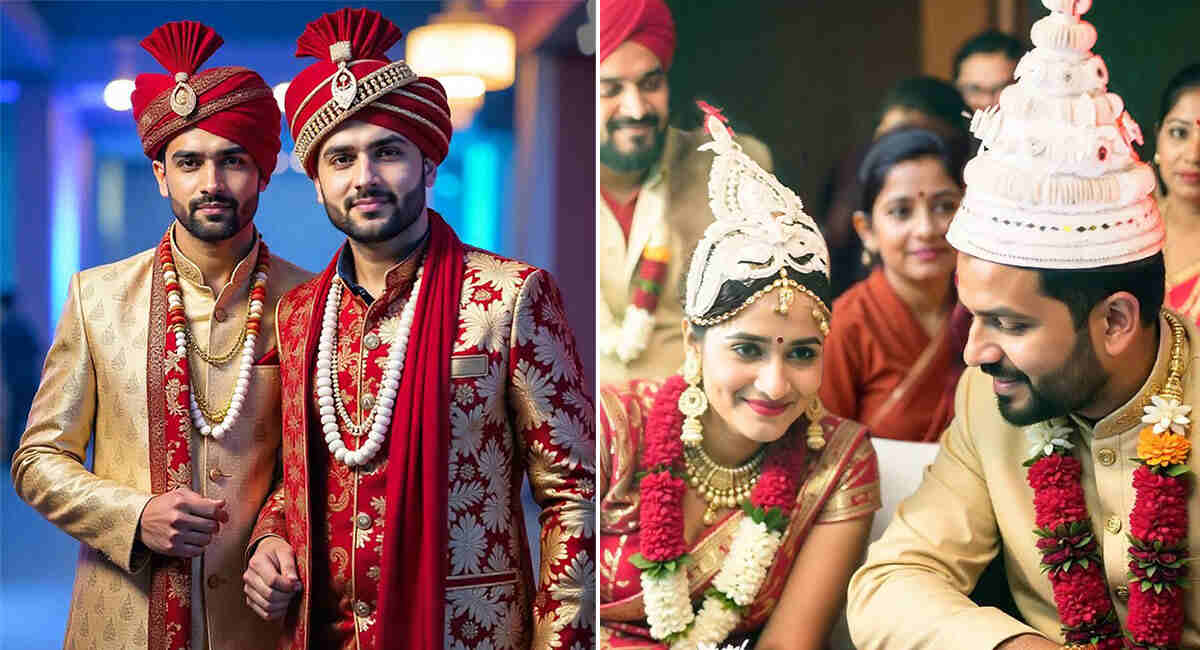Crowning Culture: Significance of the Pheta in Odia Ceremonies
In the colorful tapestries of Indian culture, traditional attire is special in defining identity, conveying respect, and celebrating heritage. Among the many garments and adornments that signify cultural depth, the pheta—or turban—stands out as a distinct and honorable symbol, particularly in the ceremonial life of Odisha. While turbans across India may symbolize royalty, valor, or rural pride, in Odisha, the pheta holds deep-rooted ceremonial, spiritual, and communal significance, embodying values of dignity, purity, and social cohesion.
What Is a Pheta?
Pheta refers to a turban or head wrap, typically made from a long piece of unstitched cloth, ranging from four to six meters long. This cloth is meticulously tied around the head in a specific style, requiring skill and tradition. Though turbans take various forms and names across India—like the safa in Rajasthan, pagdi in Punjab, or mundu in parts of South India—the Odia pheta possesses a unique aesthetic and cultural resonance, reflective of Odisha’s local customs and ethos.
In Odia society, particularly in rural settings and during cultural ceremonies, the pheta is not just an accessory. It is a powerful cultural symbol that commands respect and signifies a connection to tradition and ancestral roots.
A Symbol of Dignity and Status
In Odia culture, wearing a Pheta is a mark of honor and status. It is often reserved for occasions that require dignity, responsibility, and reverence. Whether at weddings, thread ceremonies (upanayana), temple rituals, or community feasts, elders and key male participants wear phetas to signify their esteemed roles.
A pheta on an individual’s head instantly communicates that the person is assuming a position of responsibility—be it the head of a family, a guest of honor, or a respected community member. This headwrap is also used in many families to differentiate senior male members or those entrusted with sacred or ceremonial tasks.
The groom and his close male relatives often wear intricately styled phetas during Odia weddings. This adds to the regality of their attire and symbolizes their elevated role in the event, reflecting family pride, social standing, and cultural reverence.
The Pheta in Wedding Rituals
Odia weddings celebrate tradition and brim with color, joy, and ritual. Within this festive framework, the pheta subtly asserts its decisive role. The groom’s wedding attire—usually a dhoti and kurta, or at times a sherwani—is considered incomplete without the pheta. This headwrap brings royal elegance and signifies the groom’s transition into adulthood and responsibility within the family and community.
The groom’s pheta is often white or saffron and adorned with golden borders, signifying auspiciousness, purity, and spiritual readiness. Tying the pheta is a ceremonial act, frequently carried out by an elder male relative. This moment represents a rite of passage—a blessing and a symbolic induction into married life and the obligations that come with it.
Close male relatives and senior community members also wear phetas during wedding rituals, underscoring the family unity and cultural continuity theme.
Cultural Significance in Religious and Social Ceremonies
Beyond weddings, the pheta is integral to Odisha’s many religious, social, and civic ceremonies. Its significance transcends aesthetics, embodying discipline, devotion, and cultural pride.
- Puja and Temple Ceremonies
In temple cities like Puri, Bhubaneswar, and Konark, people commonly wear the pheta during major festivals and rituals such as Rath Yatra, Chandan Yatra, and Snana Purnima. Priests and senior devotees don it to symbolize their devotion, purity, and reverence toward the deities. They treat the headwrap as sacred and accord it the same respect they give to religious garments.
- Festivals and Village Gatherings
During traditional festivals like Nuakhai (the harvest festival) or Raja Parba (a celebration of womanhood and the earth), men don festive attire with the pheta, signifying community pride and joyful celebration. Wearing the pheta during these gatherings reflects a collective cultural identity and a sense of belonging.
- Civic and Political Functions
In rural Odisha, people often honor community leaders, political figures, or elders by tying a pheta on their heads during public events or felicitation ceremonies. This act serves as a public acknowledgment of respect, leadership, and community service.
The Art of Tying the Pheta
Tying a pheta is a skilled and patient process, often passed down from generation to generation. The cotton for everyday rituals or silk for grand occasions must be wrapped precisely and pleasingly. While some styles involve multiple layers and folds, others are simpler and reflect local variations.
Though pre-tied or stitched versions have become popular for convenience, especially among the younger generation, the hand-tying tradition persists. Many still prefer the authentic, hand-wrapped pheta during weddings and temple ceremonies, a tribute to time-honored customs.
Modern Resurgence and Identity
Interestingly, the pheta is witnessing a modern-day revival among Odia youth and fashion-conscious individuals. As they become more aware of their cultural heritage, many young grooms proudly embrace the pheta as a ceremonial item and a symbol of cultural pride and identity.
Designers and cultural artisans also contribute to this resurgence, incorporating traditional motifs, fabrics, and contemporary color schemes to make the phetas more appealing to the modern aesthetic. Cultural organizations, folklore performers, and even diaspora communities worldwide continue to use the pheta during cultural shows and community events, reinforcing its role as a visual and symbolic representation of Odia heritage.
Final Thoughts
The pheta is more than just a piece of cloth. It is a living symbol of honor, tradition, and communal identity in Odia culture. People wear the pheta during sacred religious rites, joyous weddings, or public celebrations to uphold values of respect, dignity, and belonging. In a world increasingly shaped by modernization and global trends, the pheta remains a steadfast emblem of Odisha’s rich cultural heritage. By wearing it, one does not simply adhere to tradition but actively participates in a centuries-old narrative of pride, purpose, and legacy.
So the next time you witness an Odia ceremony and see someone adorned in a pheta, it is not merely an accessory. It is a significant symbol of heritage, reverence, and timeless pride.


